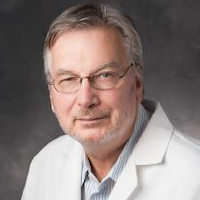Article
Understanding Potential COVID-19 Treatments
Author(s):
An expert breaks down potential treatments for COVID-19 and the therapies that have failed.

Stanley Deresinski, MD
There is no treatment currently that has proved to be effective for coronavirus disease 2019 (COVID-19). Many have touted hydroxychloroquine and chloroquine as possible miracle medications for patients with the virus, but efficacy and safety remain up in the air.
In a webinar on ContagionLive®, a sister publication of HCPLive®, about COVID-19, Stanley Deresinski, MD, presented information regarding the genetics of the virus and potential treatments.
Along with hydroxychloroquine and chloroquine, there have been a number of therapies suggested for the treatment of novel coronavirus, including: remdesivir, lopinavir/ritonavir, ribavirin, and monoclonal antibodies.
“The number of drugs that are being proposed is growing almost as rapidly as the epidemic itself,” Deresinski, a clinical professor of medicine in the Division of Infectious Diseases and Geographic Medicine at Stanford University, said.
The major targets being proposed are predominantly direct antiviral effects or immunomodulator effects dealing with the ARDS-like picture that commonly occurs.
Remdesivir
Still, the efficacy is unknown.One of the drug that people might be most interested in is remdesivir, which can be accessible. The drug, produced by Gilead, is a nucleotide analog that inhibits RNA-directed RNA polymerase after its intracellular phosphorylation.
Remdesivir has activity in primate models against SARS and MERS and in-vitro activity against COVID-19.
The drug was also studied in Ebola, but it failed against active monoclonal antibodies.
Currently, there are 6 ongoing registered clinical trials worldwide for remdesivir—4 in the US, 2 in China. Two of the trials are being spearheaded by Gilead.
There are 3 trials that are more generally available, with the 2 sponsored by Gilead both being Phase 3, open label, randomized trials. In the randomization of patients with mild to moderate COVID-19, it is 5 days of remdesivir versus 10 days of remdesivir or no remdesivir. There is no standard of care arm for those with severe disease.
A similar trial, adapted by the National Institute of Allergy and Infectious Diseases (NIAID), is a phase 2, blinded, randomized trial. The adaptive trial started out as remdesivir for 10 days versus placebo and if remdesivir does nothing for a patient, another drug with be substituted until an active drug is detected. That drug then would serve as the comparator.
There has been also expanded access to remdesivir, but there’s been an abrupt change in it because Gilead was being overwhelmed with requests for individual patient use, Deresinski said.
Now, Gilead is transitioning to differentiate between personal compassionate use to expanded access, which means institutional investigational new drug (IND) as opposed to individual investigator IND. During the transition, Gilead is not accepting new requests for compassionate use and hopes that as expanded access gets up and running, the company will accelerate access to the drug for the most severely ill patients and allow data collection from all participants.
“The remdesivir I think most people have the most hope in,” Deresinski said.
Some of the trials are set to end in April and are far more advanced.
Chloroquine and Hydroxychloquine
“We may have an answer fairly shortly and that would be the first drug that we know that works,” he added.Everybody is talking about these drugs all the time, Deresinski.
Physicians are actually hoarding these by writing prescriptions for themselves and their friends, he added.
The drugs have nonspecific antiviral effects by increasing endosomal pH required for virus and cell fusion and interferes with the glycosylation of cellular receptors of SARS-CoV-2. Discovered in the 1960s, chloroquine has never been developed for any viral infection.
Initial interest came because China included it in its guidance for treatment based on a report that it shorted the duration of the disease in more than 100 patients and promoted conversion to negative PCR. Those findings have not yet been reported, according to Deresinski.
There is an ongoing phase 3 place-controlled trial in China of hydroxychloroquine for pneumonia.
The study which likely resulted in the mass-conversations about the drugs, tested the efficacy of hydroxychloroquine plus azithromycin—not all patients received the azithromycin. The control arm was patients treated at a different hospital or patients in the same hospital who refused to participate. Of the 42 patients initially enrolled, 6 in the chloroquine arm were exclused versus none of the 16 controls. One of the reasons for exclusion were that 3 were moved to the ICU, 1 died, 1 left the hospital, and 1 withdrew because of nausea.
The primary endpoint was changing the nasal PCR from positive to negative at day 6, and there was a seen difference. Additional clinical endpoints weren’t reported in the study.
Then, a more recent study published in China and had a lot of problems relating to it. The primary endpoint was the same, except at day 7. There was no difference in PCR negativity in day 7 in contrast to what was reported in the previous study at day 7.
Lopinavir/Ritonavir
The findings all raised questions about the findings of the other studies.A study in the New England Journal of Medicine tested a combination of lopinavir and ritonavir against standard of care in cases of severe infection.
A major problem with the study was that the number of days to initiating therapy was 13 days, so the patients were well into their illness when they saw a therapy. Because the trial failed, many removed the combination therapy from their list of suggested treatment options.
Still, prophylaxis trials are beginning and the role of immunomodulators are being determined.





